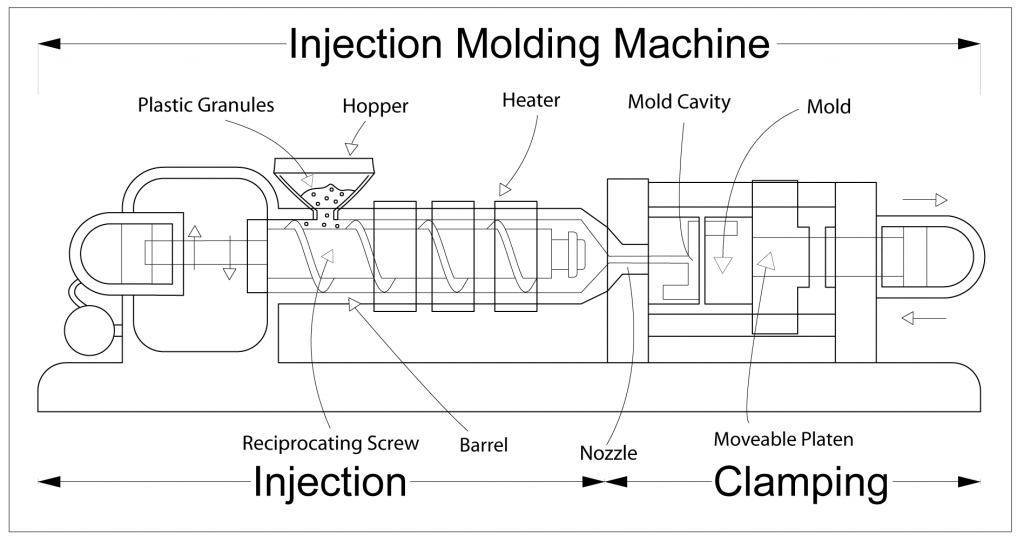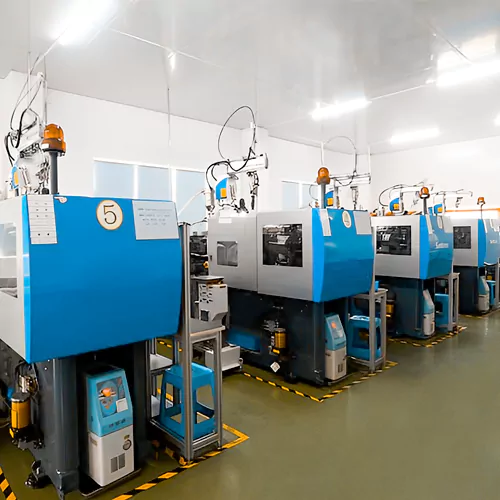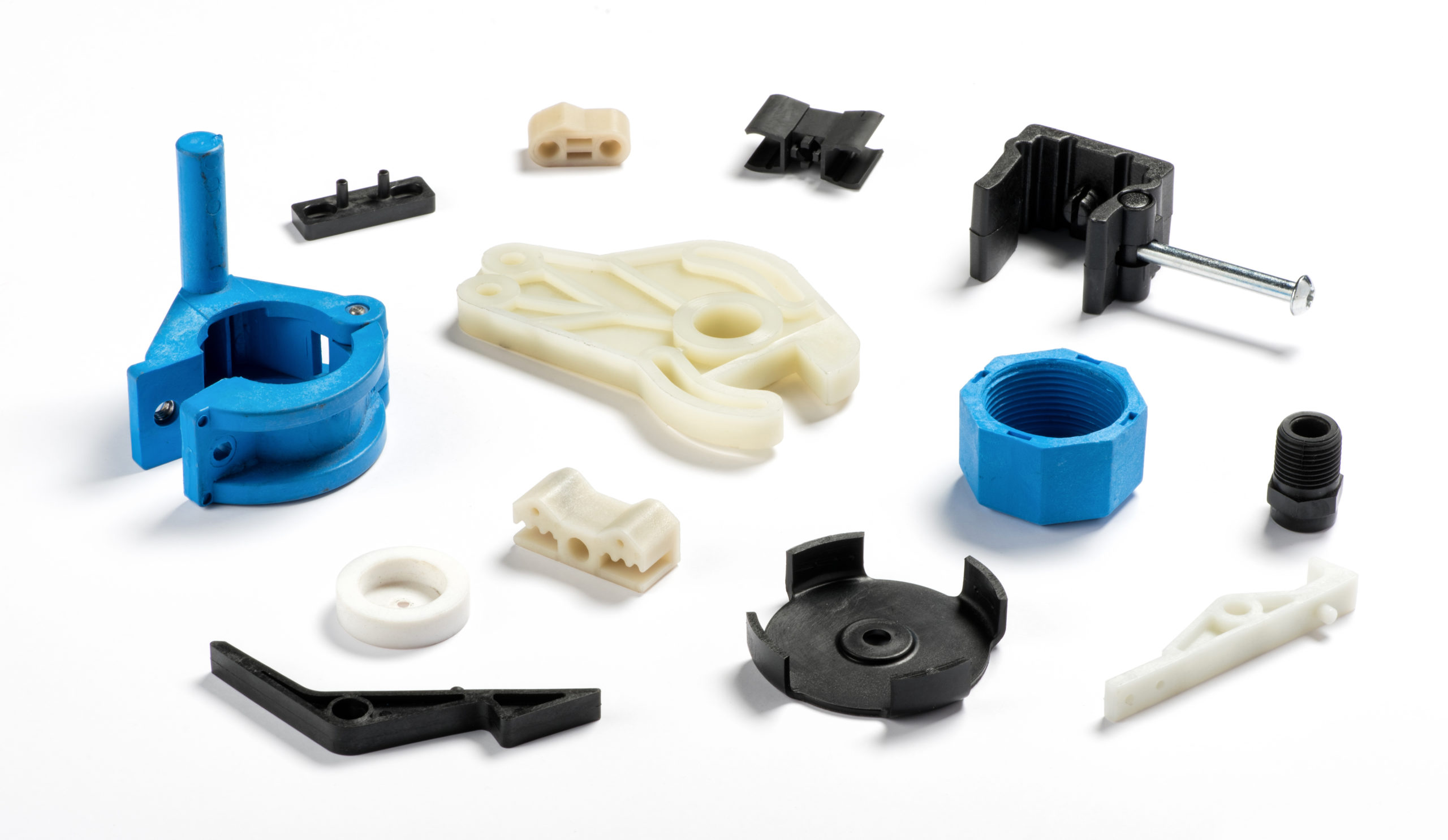The Duty of Plastic Injection Molding in Producing Cost-Effective Industrial Components
The Duty of Plastic Injection Molding in Producing Cost-Effective Industrial Components
Blog Article
Understanding the Basics of Plastic Injection Molding Processes
Plastic injection molding offers as a cornerstone of contemporary production, supplying a methodical method to generating complex parts with accuracy. Exploring these vital aspects could reveal exactly how even small modifications can lead to significant improvements in production outcomes, raising inquiries concerning the potential for advancement in this well established process.
What Is Plastic Injection Molding?
Plastic shot molding is a widely utilized production process that changes thermoplastic and thermosetting products into specific and complex shapes. This technique is preferred for its capability to create high quantities of similar get rid of phenomenal precision, making it an essential method in various markets, including automobile, durable goods, and medical gadgets.
The procedure involves thawing the chosen plastic product and injecting it into a mold and mildew under high stress. The mold, made to the specs of the desired part, enables the liquified plastic to materialize as it solidifies and cools down. Once the product has solidified, the mold is opened up, and the finished component is ejected.
Plastic shot molding offers several advantages, consisting of decreased waste, uniformity in manufacturing, and the capacity to incorporate complex designs that may be challenging with various other manufacturing methods. Additionally, it supports a wide series of materials, each supplying unique residential or commercial properties that can be tailored for certain applications. As markets remain to introduce, plastic injection molding remains at the forefront, enabling the development of advanced products that satisfy progressing customer demands.
The Shot Molding Process
The shot molding procedure is an advanced strategy that involves numerous vital phases to generate top notch plastic elements. Plastic pellets are fed into a heated barrel where they are thawed right into a thick fluid. This molten plastic is after that infused under high pressure into a precision-engineered mold, which shapes the product into the preferred kind.
When the mold is loaded, the plastic is enabled to strengthen and cool, taking the shape of the mold cavity. Air conditioning time is vital, as it impacts the cycle time and the last buildings of the shaped part. After sufficient air conditioning, the mold and mildew opens, and the finished component is expelled using ejector pins.

Products Used in Shot Molding
Numerous products can be utilized in the shot molding procedure, each offering one-of-a-kind residential properties that accommodate details applications. One of the most commonly made use of products consist of thermoplastics, thermosetting plastics, and elastomers.

Thermosetting plastics, like epoxy and phenolic resins, undertake a chemical change during the treating procedure, leading to a rigid, inflexible framework. These materials are excellent for applications needing high warmth resistance and structural honesty, usually used in vehicle parts and electrical insulators.
Elastomers, consisting of silicone and rubber-based products, offer adaptability and strength. my response Their unique properties make them suitable for applications that require flexibility, such as gaskets and seals.
In addition, specialized products like bio-based plastics and compounds are gaining grip for their ecological advantages and enhanced performance attributes, broadening the range of injection molding applications in different sectors. Comprehending the buildings of these products is crucial for picking the appropriate type for specific projects.
Advantages of Injection Molding
Injection molding stands out as a highly reliable production procedure that offers countless advantages for generating complicated get rid of precision. Among one of the most substantial advantages is the capacity to produce elaborate layouts that would certainly be challenging or difficult to accomplish with other approaches (Plastic Injection Molding). The process allows for limited resistances and comprehensive features, making certain top quality elements
Additionally, shot molding is understood for news its quick manufacturing abilities, making it an optimal choice for high-volume production. When the mold is developed, parts can be created promptly, minimizing lead times and raising general efficiency. This performance not only decreases production costs yet likewise provides an affordable edge in the market.
The adaptability of materials made use of in shot molding better improves its allure. A broad variety of thermoplastics and thermosetting polymers can be employed, enabling manufacturers to choose materials that ideal satisfy their details demands, consisting of adaptability, heat, and strength resistance.
Moreover, the process lessens waste, as excess product can usually be recycled and recycled. This sustainability facet adds to a reduced ecological impact, making injection molding an accountable manufacturing selection. Overall, the advantages of injection molding make it a favored method for numerous markets.
Aspects Influencing Item Quality
While various aspects can affect item quality in injection molding, understanding these aspects is vital for achieving optimal results. Key aspects consist of product choice, processing specifications, and mold design.
Product option plays an essential role, as various polymers display one-of-a-kind buildings that affect flowability, strength, and thermal stability. Poor product selection can lead to problems such as warping or insufficient dental filling.
Processing criteria, consisting of temperature level, stress, and cycle time, must be meticulously regulated. Variants in these settings can lead to variances partially dimensions and surface area coating. Exceedingly high temperatures might trigger destruction of the polymer, while poor pressure can result in brief shots.
Mold and mildew layout is equally important, as it identifies the flow of the molten plastic and the cooling process. Improperly made molds might result in uneven air conditioning rates, causing recurring anxieties and dimensional inaccuracies.

Conclusion
Finally, plastic injection molding works as an important production procedure that makes it possible for the reliable manufacturing of premium parts. Proficiency of the injection molding procedure, consisting of the understanding of products and the visit this site right here impact of different aspects on item top quality, is necessary for attaining ideal outcomes. The advantages of this method, such as cost-effectiveness and design adaptability, more emphasize its value throughout multiple industries, solidifying its standing as a favored option for high-volume production.
Plastic shot molding offers as a foundation of modern production, supplying a systematic method to generating complex parts with accuracy.Plastic injection molding offers a number of benefits, consisting of decreased waste, consistency in manufacturing, and the capability to incorporate intricate layouts that may be testing with various other manufacturing approaches (Plastic Injection Molding). As industries proceed to innovate, plastic injection molding continues to be at the leading edge, enabling the advancement of advanced items that meet advancing consumer needs
The injection molding process is a sophisticated method that includes several key phases to produce top notch plastic elements.In conclusion, plastic shot molding offers as an important manufacturing procedure that allows the reliable production of top notch components.
Report this page